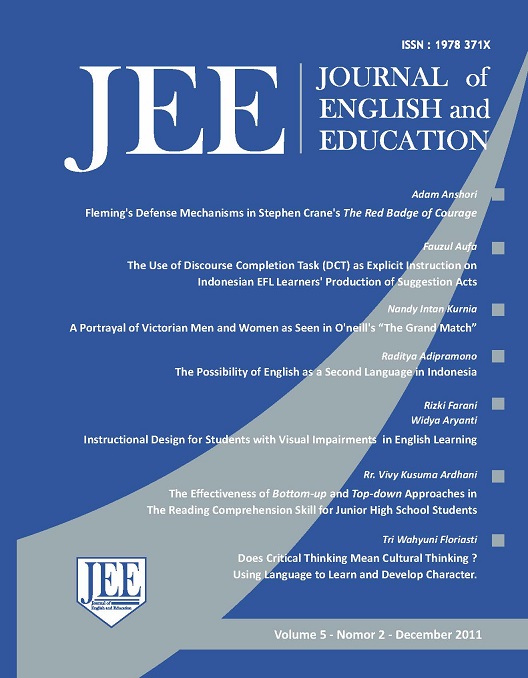Main Article Content
Abstract
Mastering English has become one important skill for students in higher education, especially in university level. As the impact, every university provides English program for students in the faculty or language center. However, not every student can master English fast, for example: students with visual impairments. Students with visual impairment are a group of students who have visual problem; either it is low vision or blind. Students with visual impairment need different approach in learning English. This condition motivates lectures to adapt specific instructional design to support classroom activities. There are 4 important components in designing instructional design for students with visual impairment, such as students' characteristics, learning objective, method and assessment. The design should be adapted to fully support their inclusion in the classroom. By designing instructional design for students with visual impairments, it is expected that they will be able to comprehend the material and to increase their motivation in learning English. This paper aimed to understand appropriate instructional design for students with visual impairment. This paper also provides study cases in Inclusion English Class at university level where students with visual impairment and sighted students study at the same classroom. By discussing this issue, it is expected that every lecture recognize basic characteristics of students with visual impairment and choose the appropriate instructional design to accommodate all character of students.
Keywords
Article Details
Copyright (c) 2016 JEE, Journal of English and Education

This work is licensed under a Creative Commons Attribution-ShareAlike 4.0 International License.
Authors who publish with this journal agree to the following terms:
- Authors retain copyright and grant the journal right of first publication with the work simultaneously licensed under a Creative Commons Attribution-ShareAlike 4.0 International License that allows others to share the work with an acknowledgment of the work's authorship and initial publication in this journal.
- Authors are able to enter into separate, additional contractual arrangements for the non-exclusive distribution of the journal's published version of the work (e.g., post it to an institutional repository or publish it in a book), with an acknowledgment of its initial publication in this journal.
- Authors are permitted and encouraged to post their work online (e.g., in institutional repositories or on their website) prior to and during the submission process, as it can lead to productive exchanges, as well as earlier and greater citation of published work (See The Effect of Open Access).

